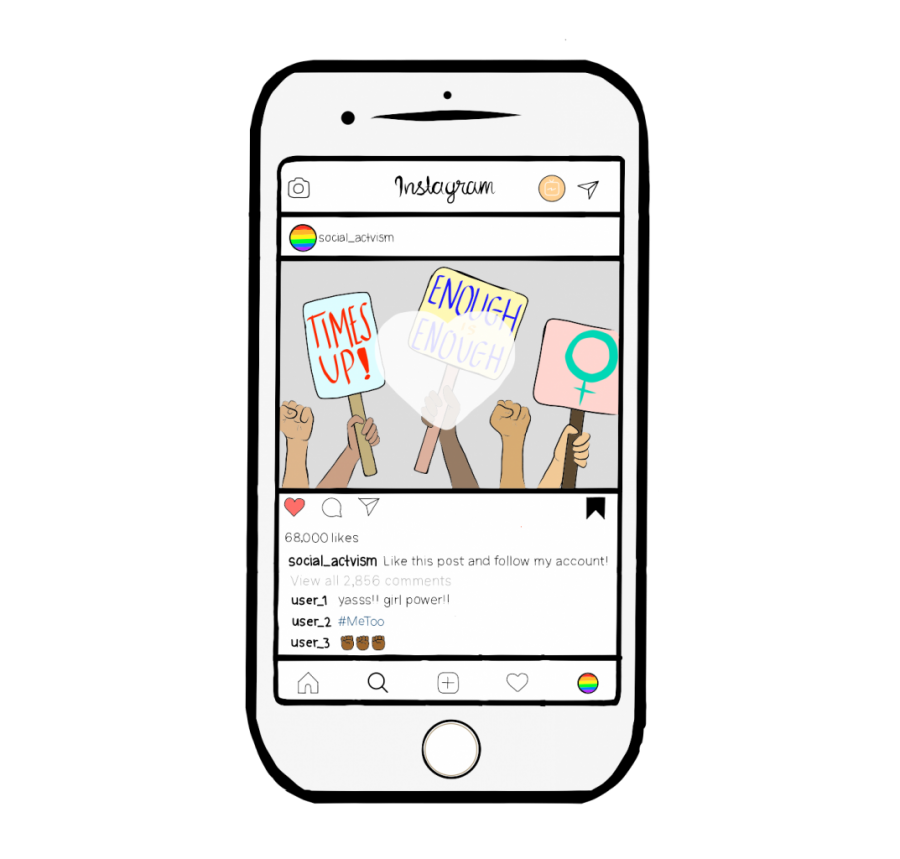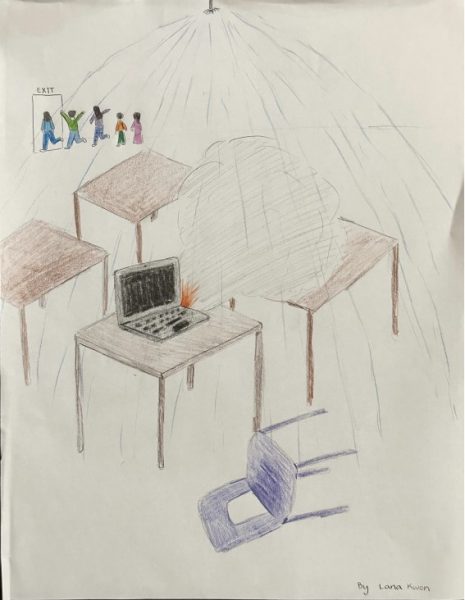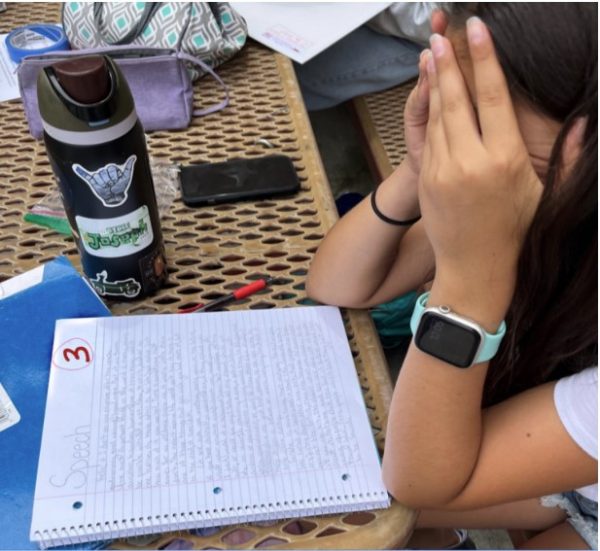“Slacktivism” is Activism
Whether it be online or in mass protests, new forms of activism offer effective means for change
Social media acts as an effective platform for millennials’ new form of activism: “Slacktivism.”
On March 14, 2018 at 10 a.m., I silently grabbed my backpack and walked out of my classroom to the flagpole in front of the school where 17 empty chairs had been placed, each containing a victim’s name from the mass shooting at Marjory Stoneman Douglas High School in Parkland, Florida. Prior to the National School Walkout, I spread promotional messages for the national walkout on Instagram, which aimed to rally students all over the country to honor the victims and promote stricter gun control laws. My social networking form of activism classified me as a “slacktivist,” a person who uses little effort or money to participate in social movements. However, for a new generation of youth, online activism is the most effective means of creating change and often times offers an even more weighty means for change amidst the digital era.
In fact, the National School Walkout involved more than 185,000 teenagers worldwide. According to a Pew Research study, the actions of students across the country resulted in 50 new gun control laws across the United States. Without the widespread use of social media applications such as Twitter and Instagram to encouraged this act of civil disobedience, the impact of guns on students and the urgency of the issue may have been brushed aside by legislators.
Charitable organizations cling onto this form of modern, rapidly spreading activism as seen with the viral ice bucket challenge.The Amyotrophic Lateral Sclerosis (ALS) Association started the movement to raise money and awareness for the disorder. The videos of ice cold water buckets flooded social media. According to their website, the campaign resulted in 115 million dollars donated to ALS Association.
I too dumped a bucket of water on my head in the heart of Union Square, San Francisco to bring awareness to ALS, which is a common and effective way for teenagers like myself to get involved in a campaign and spread a positive message. By utilizing the hashtag “#icebucketchallenge” on social media, youth gained access to an important issue with the click of a button.
Slacktivism is not about the individuals clicking like or share on a picture, but, like all other forms of activism, is about what happens when a community comes together to create change. The internet allows this community to span all across the world and involve people of all ages, races and genders. For teenagers who lack access to many resources and frequently engage on social media platforms, slacktivism is our way of becoming involved in the conversation. Although online activism may be considered unconventional by past precedents, it works, and our walkouts and challenges are proof of the action that can come about when we “slack off.”
Your donation will support the student journalists of Woodbridge High School. Your contribution will allow us to purchase equipment and cover our annual website hosting costs.

Hey Warriors! This is my second year in the Golden Arrow and I am ecstatic to be back! I have been in the Woodbridge Vocal Music Department for four years,...











